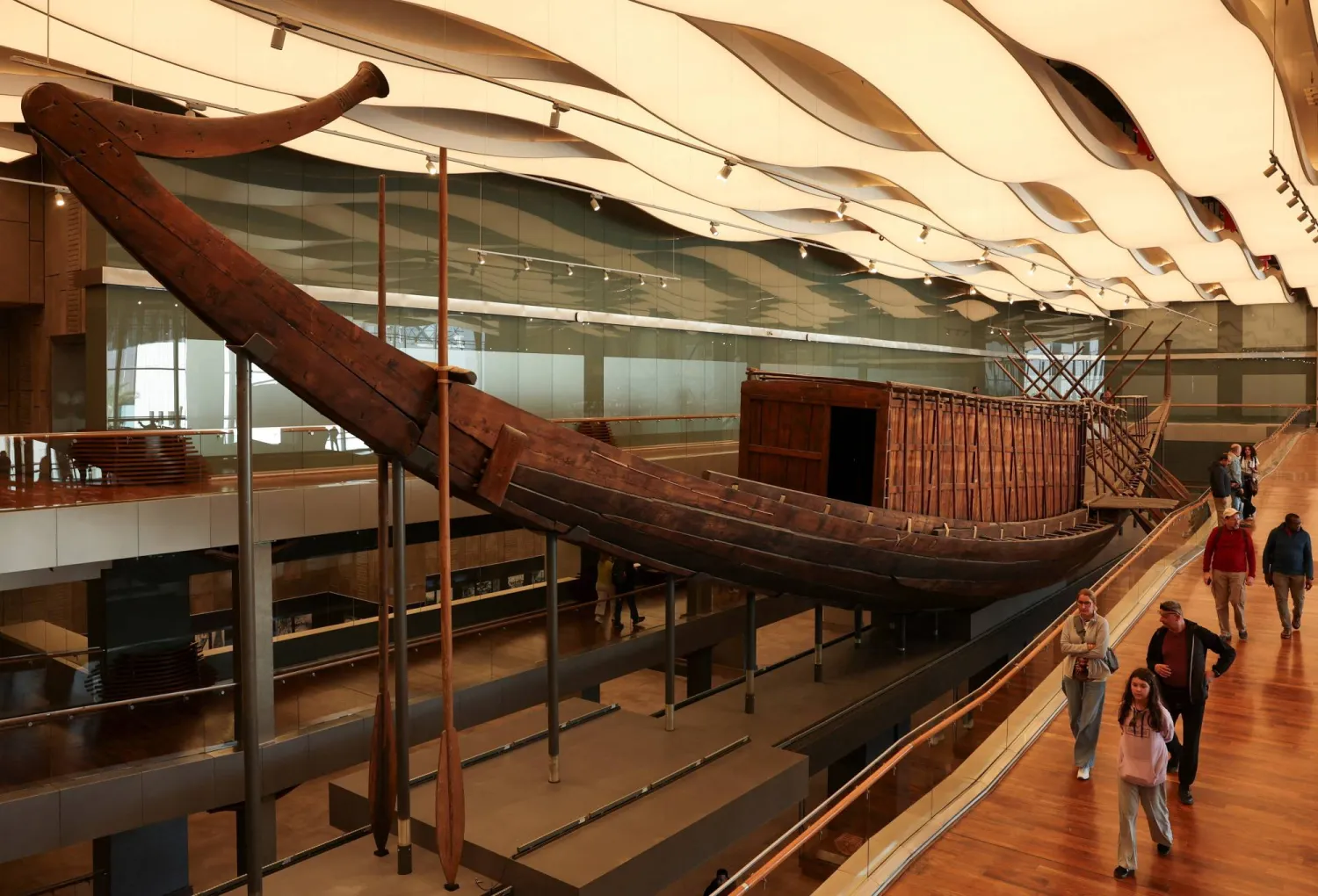Maryse Condé, an acclaimed French-language novelist from Guadeloupe who in novels, stories, plays and memoirs imagined and redefined the personal and historical past from 17th century New England to contemporary Europe, has died at age 90.
Condé, winner in 2018 of an "alternate" Nobel Prize, died Monday night at a hospital in Apt, outside Marseille. Her longtime editor, Laurant Laffont, told The Associated Press that she had suffered from a neurological illness that impaired her vision to the point of having to dictate her final novel. But she still enjoyed a 90th birthday celebration, in February, when she was joined by family and friends.
"She was smiling, she was joyous," said Laffont, who otherwise remembered her as a woman of uncommon intensity and generosity. "It was a wonderful farewell, a truly great sendoff."
Condé, who lived in Luberon, France in recent years, was often called the "grande dame" of Caribbean literature. Influenced by Frantz Fanon, Aimé Césaire and other critics of colonialism, she was a world traveler who probed the conflicts between and within Western culture, African culture and Caribbean culture, and the tensions between the desire for liberation and what the author would call "the trap of terrorism and simplistic radicalization."
With her husband, Richard Philcox, often serving as her English-language translator, Condé wrote dozens of books, ranging from historical explorations such as "Segu," her best known novel, to the autobiographical stories in "Tales from the Heart" to fresh takes on Western literature. She reworked "Wuthering Heights" into "Windward Heights," and paired a West Indian slave with Hester Prynne of "The Scarlet Letter" in "I, Tituba, Black Witch of Salem."
"A historian is somebody who studies the facts, the historical facts — somebody who is tied to what actually happens," she explained in an interview included in the back section of "I, Tituba," published in 1992. "I am just a dreamer — my dreams rest upon a historical basis. Being a Black person, having a certain past, having a certain history behind me, I want to explore that realm and of course do it with imagination and my intuition. But I am not involved in any kind of scholarly research."
The mother of four children (with first husband Mamadou Condé), she was nearly 40 when she published her first novel and almost 50 when "Segu" made her an international name. "Segu," released in French in 1984 and in the United States three years later, was set in an 18th century African kingdom and followed the fates of a royal advisor and his family as their community is upended by the expansion of the slave trading industry.
She continued the story in "The Children of Segu," but rejected additional volumes, explaining to one interviewer that her spirit "had journeyed to another world." Over the following decades, her fictional settings included Salem, Massachusetts ("I, Tituba"), Jamaica ("Nanna-Ya") and Paris and Guadeloupe for "The Wondrous and Tragic Life of Ivan and Ilana."
Condé received numerous awards over the second half of her life, among them the Commandeur de l’Ordre des Arts et des Lettres from the French government, the US-based Hurston & Wright Legacy Award and the New Academy Prize for literature, an informal honor presented in 2018 in place of the Nobel, which was sidelined for the year amid allegation of sexual harassment by prize committee members.
"She describes the ravages of colonialism and the post-colonial chaos in a language which is both precise and overwhelming," New Academy judge Ann Pålsson said at the time. "The dead live in her stories closely to the living in a ... world where gender, race and class are constantly turned over in new constellations."
In the mid-1990s, Condé joined the faculty at Columbia University as a professor of French and Francophone literature. She also taught at the University of Virginia and UCLA among other schools before retiring in 2005, around the same time French President Jacques Chirac named her head of the French Committee for the Memory of Slavery.
Conde was married twice, most recently to Philcox, a British academic whom she met in the late 1960s in Senegal.
Born Maryse Boucolon at Pointe-à-Pitre, Guadeloupe, she was one of six children (two others died) raised in a relatively prosperous and educated family, where French was favored over Creole and the poetry of Victor Hugo over local folklore. Condé was a writer from early on, creating a one-act play at age 10 about her mother, reporting for local newspapers in high school and publishing book reviews for a student magazine in college, the Sorbonne Nouvelle in Paris.
She was admittedly isolated as a young woman, and would remember how her family "prided itself on being picture perfect in public." But in her teens, she became politicized after reading "Black Shack Alley," a 1950 novel by Joseph Zobel about the coming of age of a boy contending with white oppression in colonial Martinique, a way of life Condé knew little about.
"Today, I am convinced that what I later called somewhat pretentiously ‘my political commitment’ was born at that very moment," she wrote in "Tales from the Heart," published in 1998. "Reading Joseph Zobel, more than any theoretical discourse, opened my eyes. I understood that the milieu I belonged to had absolutely nothing to offer and I began to loathe it. I had become bleached and whitewashed, a poor imitation of the little French children I hung out with."
Like many young idealists in the 1960s, she moved to Africa, spending much of the following decade in Ghana, Guinea and other newly independent countries. She would discover, like many of her contemporaries, that African leaders could be as oppressive as colonial leaders, experiences she drew upon for her debut novel, "Heremakhonon," published in 1976.
"When I was in Guinea, there was a department store with that name (Heremakhonon)," Condé told Howard University professor Francoise Pfaff during an interview that appears in Pfaff’s "Conversations with Maryse Condé," published in 1996. "In theory, this store offered everything people needed, but it had nothing except Chinese toys of poor quality. For me it was a symbol of independence."
Whether in Guadeloupe, Paris, Africa or the US, she often felt apart from the general population; the author liked to say that she didn’t write in French or Creole, but in her own language, "Maryse Condé." She drew as much from oral history as from written history, navigating between the lost and dying worlds that oral tradition represented and the new world of mass media and what she called the "totally modern lifestyle."









